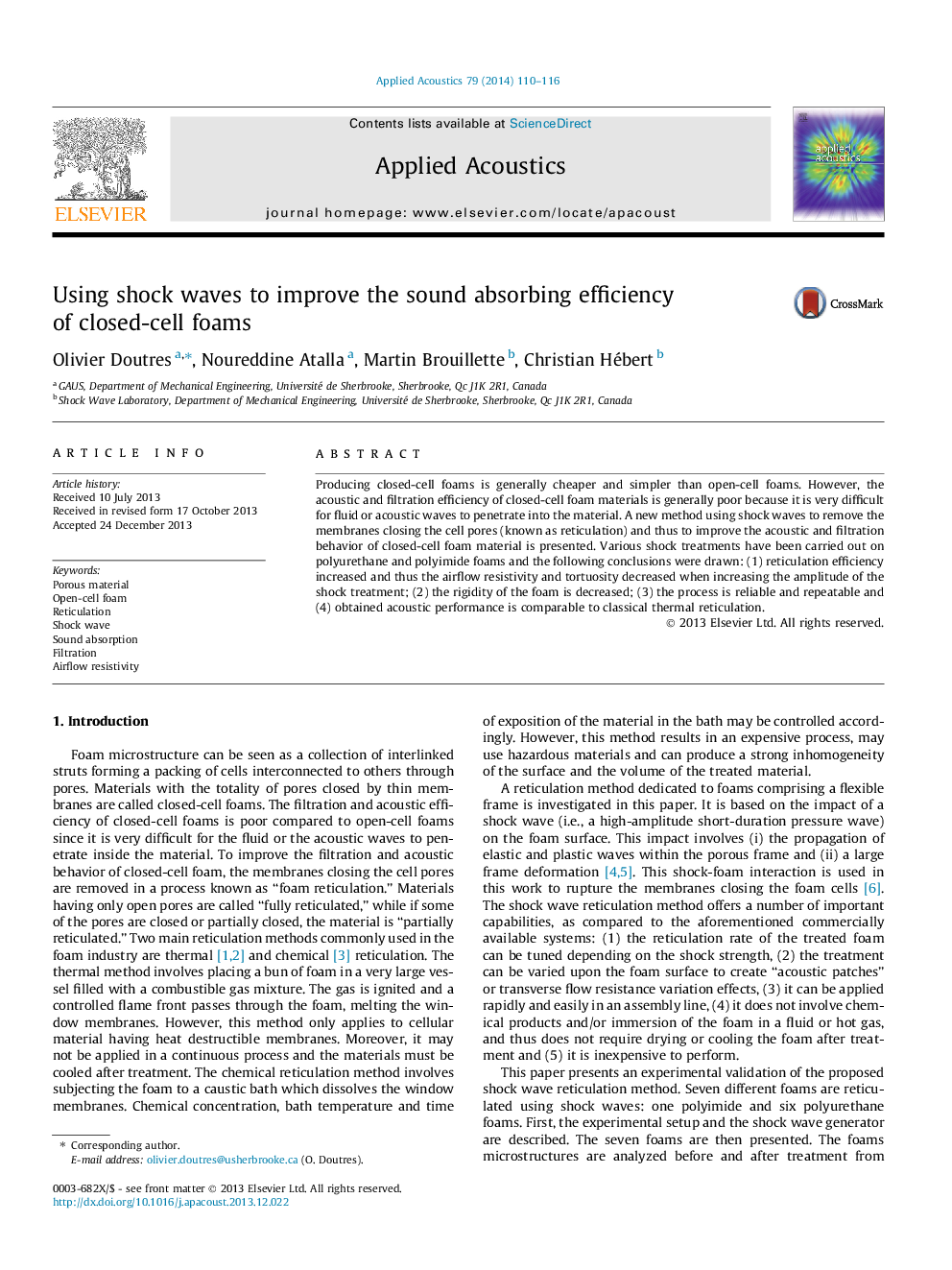| Article ID | Journal | Published Year | Pages | File Type |
|---|---|---|---|---|
| 7152819 | Applied Acoustics | 2014 | 7 Pages |
Abstract
Producing closed-cell foams is generally cheaper and simpler than open-cell foams. However, the acoustic and filtration efficiency of closed-cell foam materials is generally poor because it is very difficult for fluid or acoustic waves to penetrate into the material. A new method using shock waves to remove the membranes closing the cell pores (known as reticulation) and thus to improve the acoustic and filtration behavior of closed-cell foam material is presented. Various shock treatments have been carried out on polyurethane and polyimide foams and the following conclusions were drawn: (1) reticulation efficiency increased and thus the airflow resistivity and tortuosity decreased when increasing the amplitude of the shock treatment; (2) the rigidity of the foam is decreased; (3) the process is reliable and repeatable and (4) obtained acoustic performance is comparable to classical thermal reticulation.
Keywords
Related Topics
Physical Sciences and Engineering
Engineering
Mechanical Engineering
Authors
Olivier Doutres, Noureddine Atalla, Martin Brouillette, Christian Hébert,
